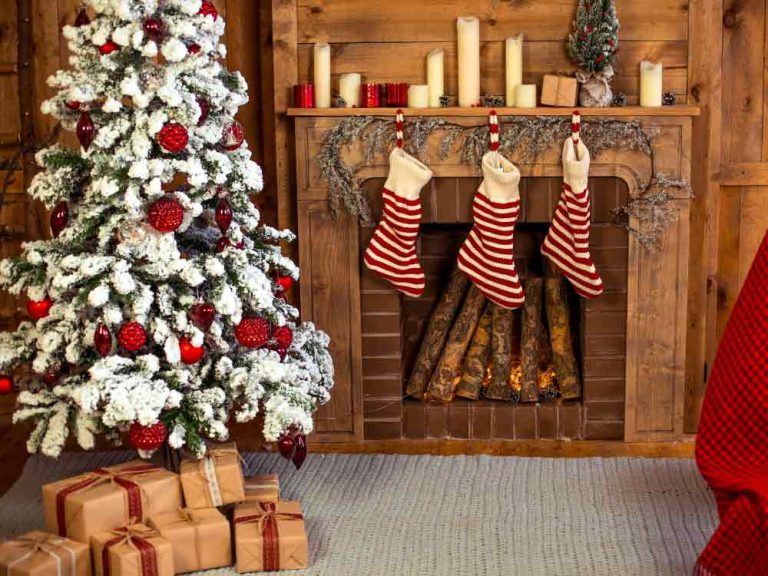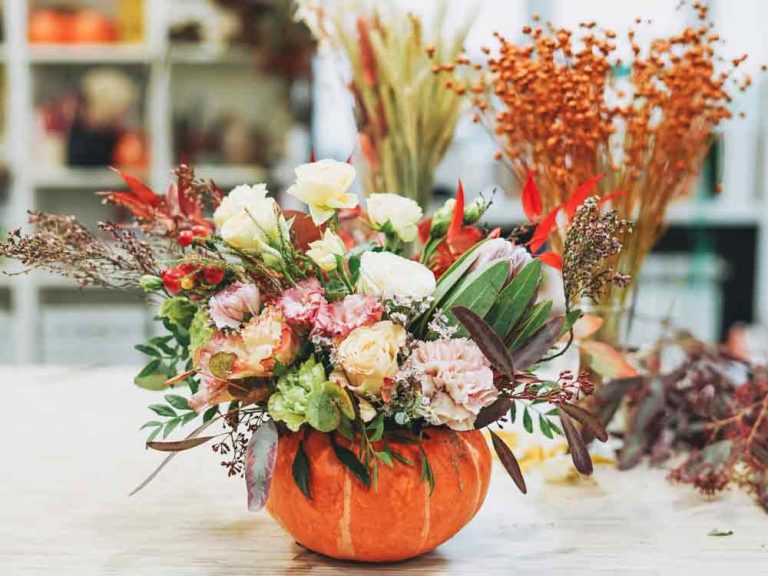20 Stunning Ikebana Flower Arrangement Ideas for 2025
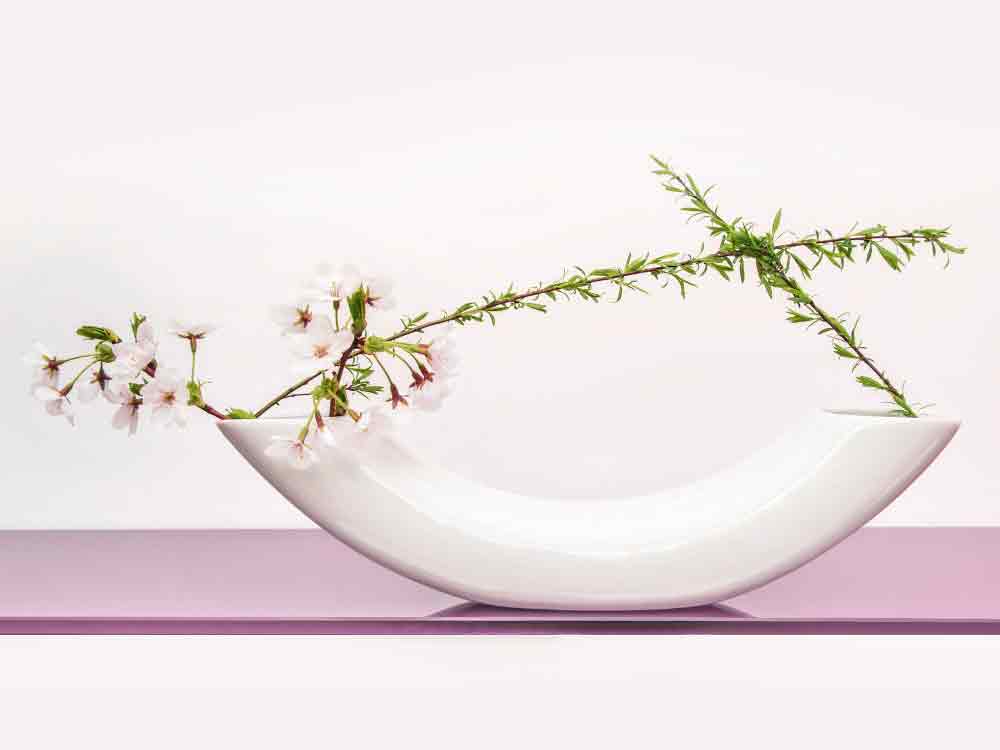
Ikebana, the traditional Japanese art of flower arrangement, is more than just a decorative practice. Rooted in Zen principles, it emphasizes harmony, balance, and the beauty of simplicity. Each arrangement tells a story, blending nature’s raw beauty with human creativity. Whether you’re a beginner or an experienced enthusiast, these 20 ideas will inspire you to create stunning arrangements that capture the essence of Ikebana.
What Makes Ikebana Unique?
Ikebana isn’t simply about placing flowers in a vase. It’s an art form that emphasizes the interplay between shape, line, and space. Unlike Western floral arrangements, which often focus on volume and color, Ikebana values asymmetry and negative space, creating a serene, minimalist aesthetic.
The philosophy of Ikebana encourages mindfulness. Practicing it allows you to connect with nature, slow down, and find balance in the simplicity of your design.
Essential Tools and Materials for Ikebana
Before diving into arrangements, gather these tools and materials:
- Kenzan: A pin holder that anchors stems in place.
- Pruning Scissors: For precise cuts on branches and flowers.
- Vase or Bowl: Choose shapes and sizes that complement your design.
- Flowers and Branches: Select seasonal elements for authenticity.
- Decorative Additions: Moss, stones, or driftwood can enhance the natural theme.
20 Ikebana Flower Arrangement Ideas
1. Minimalist Branch Focus
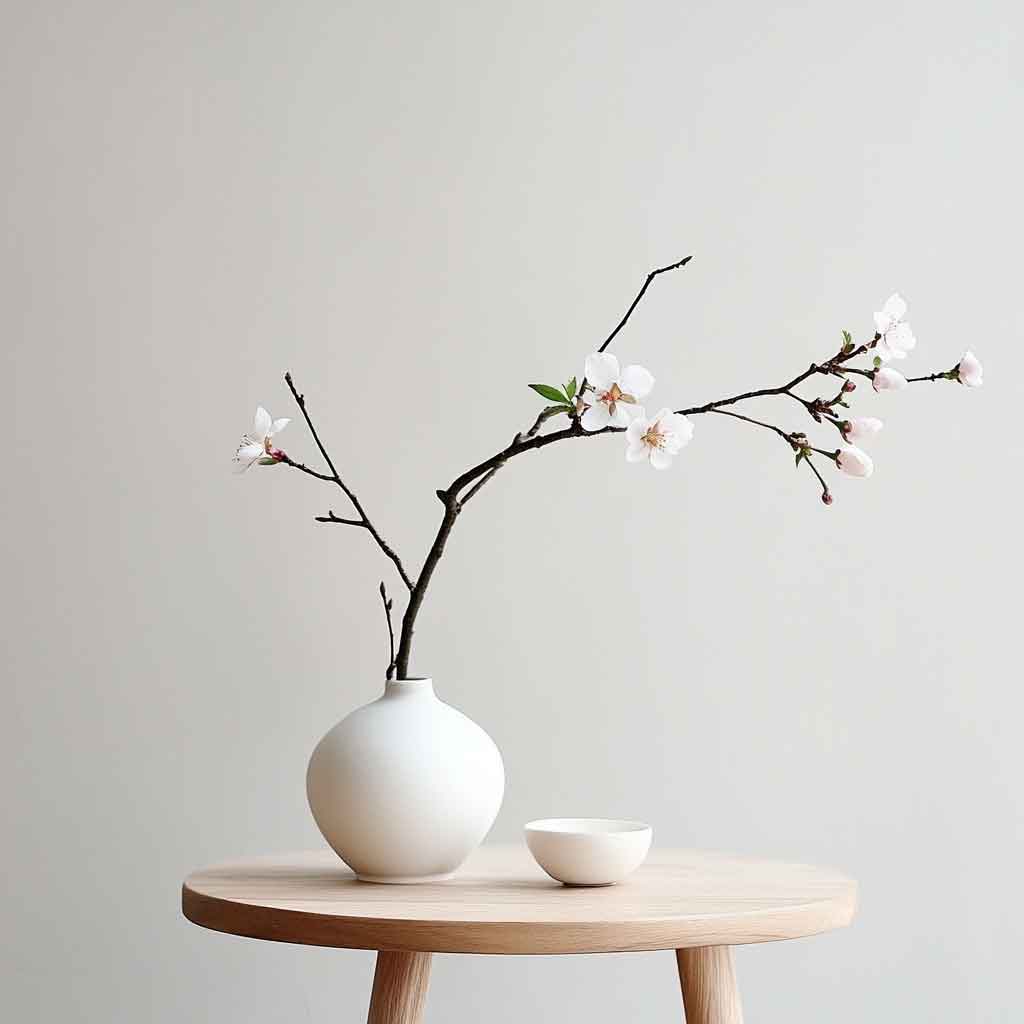
Highlight a single branch as the centerpiece, complemented by one or two blooms. This arrangement showcases the beauty of simplicity.
2. Seasonal Bloom Harmony
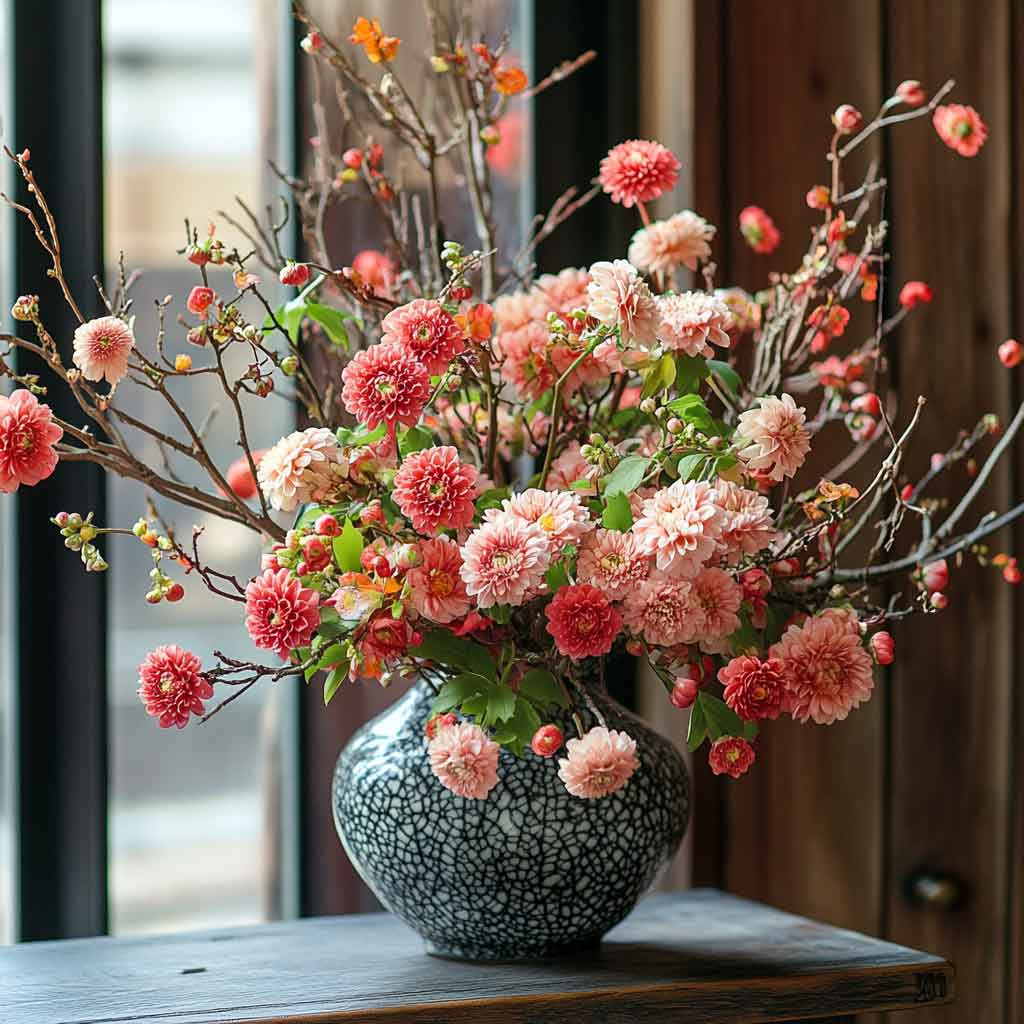
Incorporate flowers that reflect the current season, like cherry blossoms in spring or chrysanthemums in fall, emphasizing nature’s cycle.

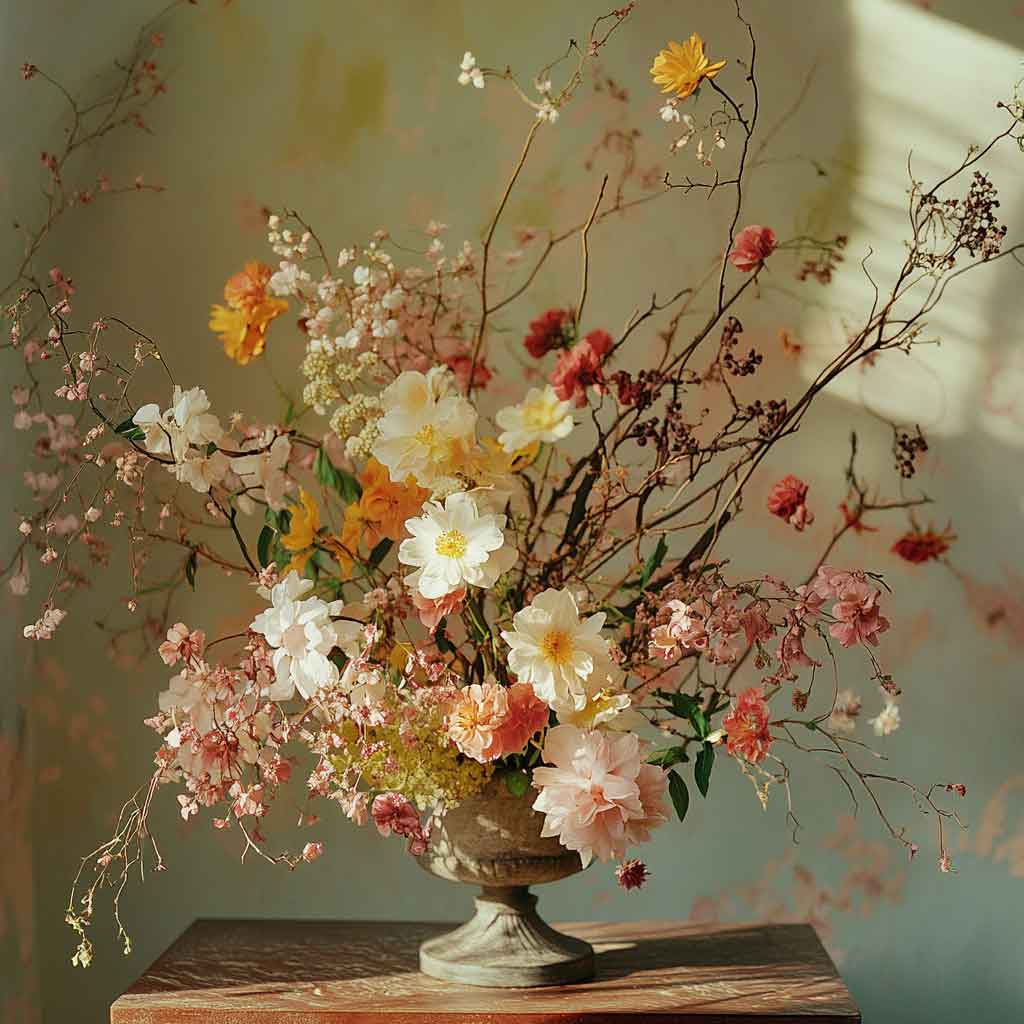
3. Floating Arrangements

Use a shallow bowl to create a floating effect. Place flowers and leaves strategically to mimic a pond-like scene.
4. Tall and Elegant Lines
Focus on verticality using long-stemmed flowers like lilies or gladiolus. Add a few smaller elements to balance the height.
5. Monochromatic Designs
Stick to one color palette, such as whites or pastels, for a cohesive and serene look.
6. Asymmetrical Modern Display
Blend traditional Ikebana with a modern twist by combining natural elements like branches with bold, structured flowers.
7. Rustic Natural Elements
Incorporate driftwood, moss, or stones to bring an earthy touch to your arrangement.
8. Compact Ikebana for Small Spaces
Design arrangements that fit on desks or shelves by using small vases and minimal elements.
9. Bamboo and Grass Combinations
Pair tall, slender bamboo stalks with soft, flowing grasses for a unique texture contrast.
10. Water-Inspired Ikebana
Combine elements like reeds and water lilies in a clear bowl to evoke the feel of a tranquil pond.
11. Cascading Design
Let flowers and branches cascade over the edge of a tall vase for a dramatic effect.
12. Ikebana for Celebrations
Incorporate symbolic flowers like peonies or plum blossoms to celebrate special occasions.
13. Abstract Arrangements
Experiment with unusual angles and shapes, letting creativity guide your design.
14. Wildflower Elegance
Gather wildflowers and arrange them loosely for a natural, countryside charm.
15. Geometric Ikebana
Use angular branches or stems to create sharp, geometric patterns.
16. Moss-Covered Bases
Cover the base of your arrangement with moss for an organic, grounded feel.
17. Ikebana with Fruits
Add small fruits like berries or citrus for a refreshing and colorful twist.
18. Layered Depth
Use branches in the background and flowers in the foreground to create a layered, three-dimensional effect.
19. Night-Inspired Arrangement
Incorporate dark-colored blooms and branches, complemented by soft, ambient lighting.
20. Ikebana for Meditation Spaces
Design arrangements with calming colors and flowing shapes, perfect for creating a peaceful atmosphere.
Tips for Creating Your First Ikebana Arrangement
- Start Simple: Focus on a single branch or flower and gradually add supporting elements.
- Balance and Proportion: Pay attention to the relationship between tall and short components.
- Embrace Negative Space: Leave room for the eye to rest; it’s as important as the arrangement itself.
Mistakes to Avoid
- Overcrowding: Avoid stuffing too many elements into one arrangement.
- Ignoring Proportions: Ensure your vase or container complements the height and shape of your design.
- Disregarding Seasonality: Always use materials that reflect the current season for authenticity.
Displaying and Maintaining Ikebana Arrangements
- Place your arrangement in a well-lit area but avoid direct sunlight to prevent wilting.
- Change the water daily and trim stems as needed to keep flowers fresh.
- Rotate arrangements to match seasonal changes, keeping your decor aligned with nature.
Conclusion
Ikebana is a timeless art that brings nature’s tranquility into your home. These 20 ideas are a starting point for exploring its endless possibilities. Whether you’re inspired by minimalism or drawn to bold, dramatic designs, Ikebana allows you to express your creativity while staying connected to the beauty of the natural world.
Ready to try it yourself? Gather some branches, flowers, and a vase, and let your imagination flow. Share your creations in the comments below—we’d love to see how you bring Ikebana to life!


